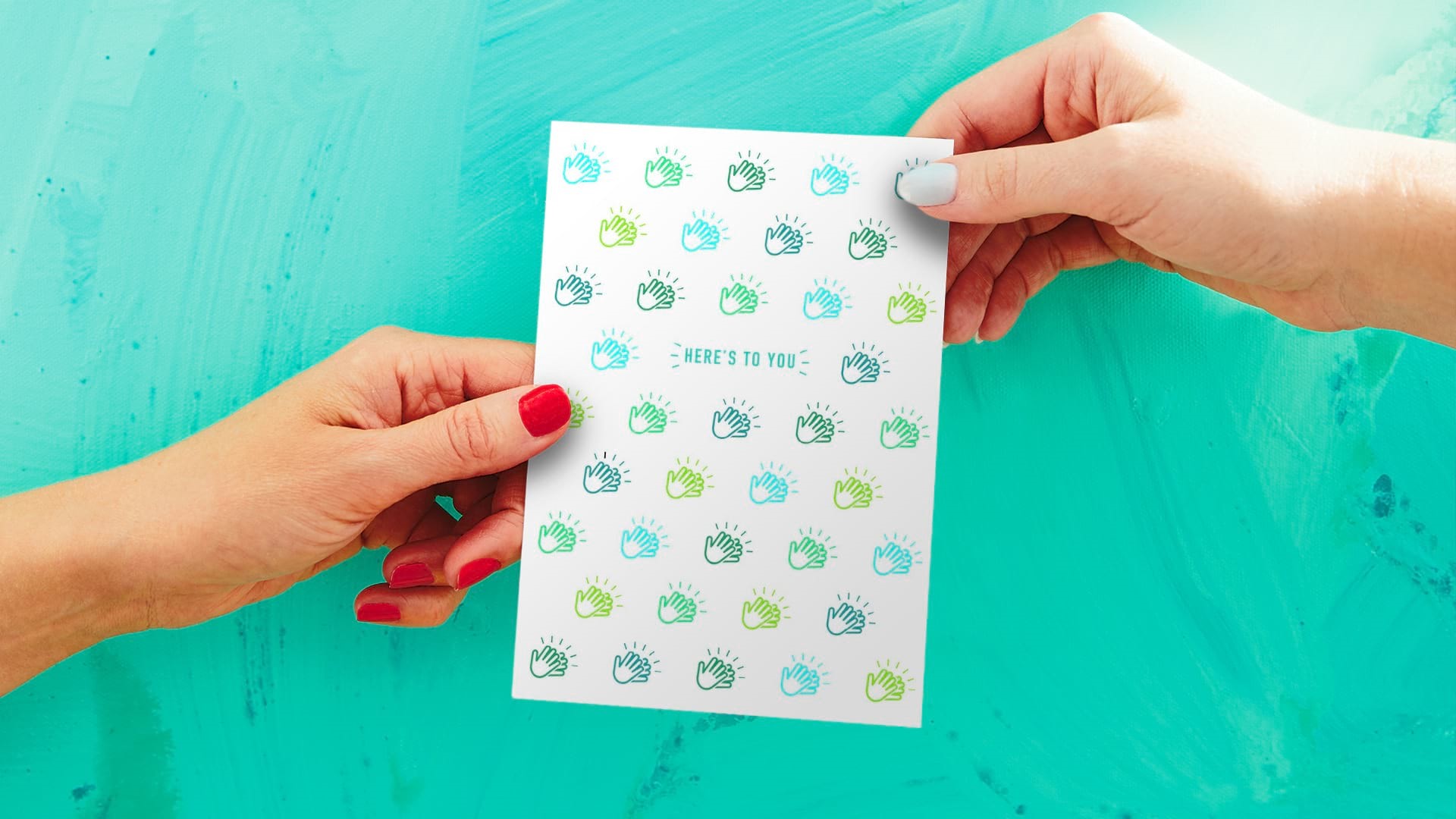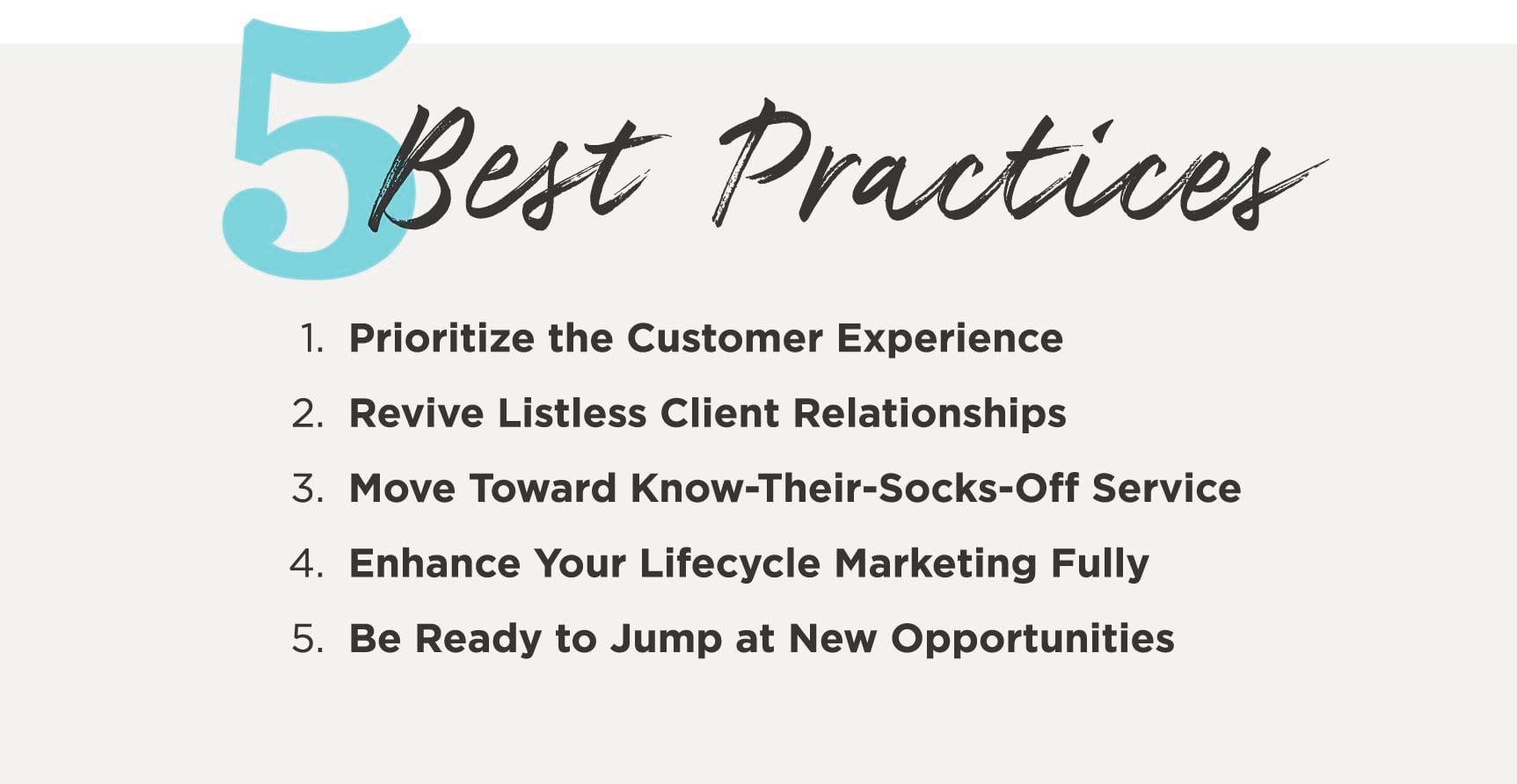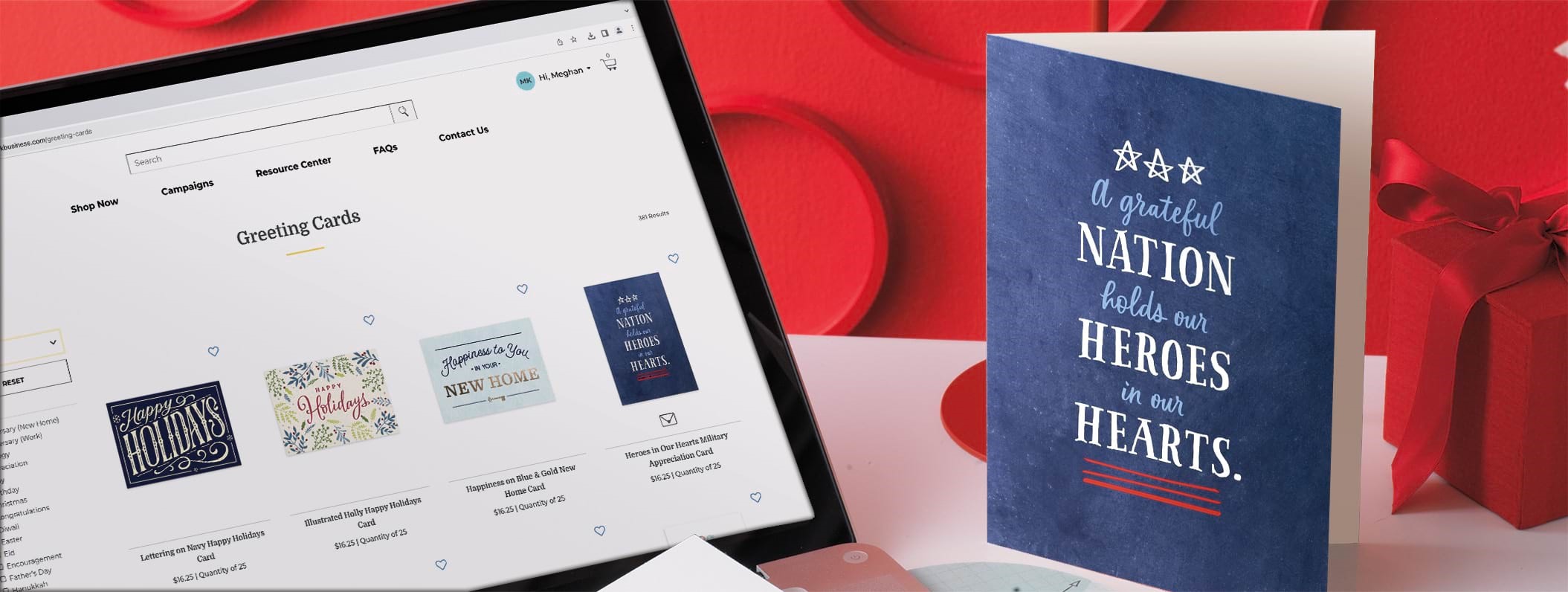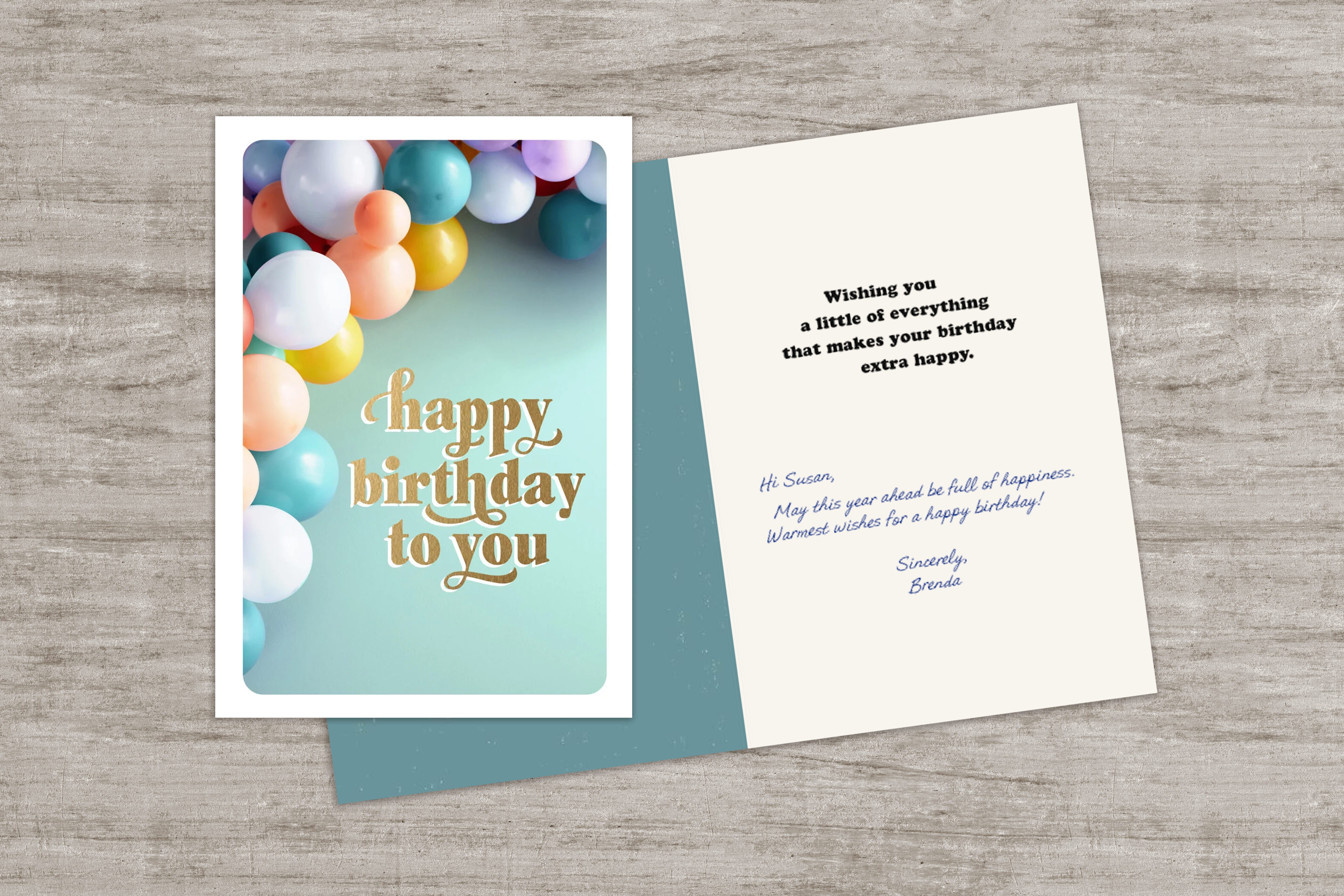A Playbook for Customer Retention Strategies

Today's consumers enjoy unprecedented access to choice. They're no longer limited to one brand or store, from the places they shop to the products they buy. On the contrary, they're free to browse anywhere, anytime — including from the comfort of home.
And this freedom to explore is exactly why your company needs strong customer retention strategies.
It's very challenging to keep a customer in today's market. As PwC research shows, about one-third of all consumers say they would leave a beloved brand after a single negative experience. That figure alone illustrates how little of a margin for error you have when it comes to retaining customers.
About one-third of all consumers say they would leave a beloved brand after a single negative experience.
Of course, unpleasant brand interactions aren't the only reasons that modern consumers shop around. Another big one is cost. Facing economic pressures, many consumers will make a change based on how much (or how little) "change" is in their wallet.
However, that's not always the case.
A Wall Street Journal podcast revealed that customers who were satisfied (and kept that way through a business's efforts) were often willing to pay more for goods and services. Essentially, the podcast guests' investigation found that brand allegiance was frequently tied to a customer's connection with a company, not the customer's budget.
The bottom line is that customer retention is good for your bottom line!
Loyal customers are hard to get and should be treated like gold. Retaining them will always be cheaper than finding replacements. If you can improve your retention by 5%, you can expect to see your profits skyrocket 25% or higher, per HubSpot. Every time a customer stays with your brand and purchases something else, you both win. This is why you need to double down on eliminating customer churn.
The bottom line is that customer retention is good for your bottom line!
If you can improve your retention by 5%, you can expect to see your profits skyrocket 25% or higher.
How can you get started? First, look at the funds you're earmarking toward customer retention versus customer acquisition. Most businesses spend far more on the latter than on the former despite the fact that Zippia statistics show that 65% of corporate sales come from existing buyers. That doesn't mean you need to put 65% of your budget toward retention and 35% toward acquisition, but you may need to rebalance your fund allocation to ensure your customer retention efforts can take off.
Having this type of "balanced budget" will allow you to put more into experiences and tools aimed at retaining customers, such as reward and loyalty programs. Those kinds of programs can empower and delight shoppers. They can also be used in lieu of contracts, which consumers don't tolerate anymore. After all, any loyalty program worth its salt will have the stickiness of a contract without turning off the customer by locking them into a long-term arrangement.
If you feel it's time to increase your customer retention initiatives, you'll want to avoid the common errors companies make and learn more about the five best practices you can deploy across your corporate ecosystem to reduce customer attribution.
If you can improve your retention by 5%, you can expect to see your profits skyrocket 25% or higher.
What Brands Are Getting Wrong About Customer Retention
Brands — including ones that are trying to retain their customer bases — are constantly tripping over their own feet and making errors. The first misstep that's happening over and over again? Businesses aren't developing "relationship capital."

Relationship capital is the glue that holds a buyer to a brand.
It's built over time and becomes the foundation for an emotional connection. As relationship capital grows, the consumer becomes less likely to shift to a different item or brand. Even if there's a little friction, as in the case of a customer receiving the wrong merchandise, the customer is more willing to forgive because of the build-up of relationship capital.
The thing is, relationship capital needs money to fuel the efforts necessary for it to blossom. Companies that don't put funds where their intentions are will gain very little relationship capital with buyers. Companies that go quiet or forget to follow up after a service engagement will do likewise. If the only time a customer hears from a company is when the bill is due, a contract is about to expire, or a subscription needs to be re-upped, something's wrong.
Another error companies make when it comes to fostering relationship capital is asking for feedback but not doing anything with it. Customers who give feedback expect it to be acted upon. When it's not, they wonder why they bothered. Sure, the business may just be checking the feedback against its own data analytics, but that doesn't mean anything to the customer. The customer just sees what feels like a one-sided transaction.
A final hindrance to relationship capital is always expecting the customer to do something. Not every marketing or sales outreach needs to have a call to action. Some outreach can be just a way to check in or show gratitude, such as with a heartfelt card on the customer's first order anniversary. There's no pressure, just a kind gesture.
How do you make sure that you're nourishing your relationship capital with customers and demonstrating that you want and deserve their fidelity? Remember the five best practices outlined here.

Best Practice 1: Prioritize the Customer Experience
Plenty of brands would say that their team members are lightning-focused on caring, connection, and empathy. However, if those qualities aren't embedded into the overall customer experience, "We care" becomes a hollow tagline.
To prioritize your buyers' customer experience, you must make certain that you strive to eliminate any pain points that might ruffle your buyers' feathers. This includes taking the following measures.
1. Use technologies like AI and machine learning thoughtfully.
Companies everywhere are leveraging AI, such as by adding chatbots to their service choices. This makes economic sense and can be valuable to your customers, but only if the technology doesn't get in the way of human-to-human connections. Though people often want to have the ability to solve issues on their own, they should still be able to connect with a live person within a reasonable timeframe when it matters.
Each time you consider adding another piece of technology into your workflows, make sure it enhances the customer experience. For instance, our Hallmark Care platform is geared toward helping sales and entrepreneurial groups build relationships. While it streamlines processes like customer service representative interactions through the use of advanced software, it frees up representatives' time so they can react with empathy and understanding.
2. Design customer journey roadmaps.
The customer journey includes many stages. Each stage is a chance for your team members to have what Edward Jones calls a "moment that matters" with your customers. Right now, you may not even realize that you're missing the mark during one of these stages. Fleshing out the typical customer journey will help you see gaps where you can make the customer experience a bit better.
You may want to get creative during this process. For example, what happens after an order is complete? Is there a way for you to make more of a splash, like sending a thank you note or calling just to say, "We're glad you're a customer"? Your job is to find places to forge an emotional connection that serves to grow the relationship capital you're trying to build.
Best Practice 2: Revive Listless Client Relationships
When client relationships aren't nurtured, they begin to wither quickly. And this happens even in good companies.
Since the pandemic began in 2020, many companies have had difficulty holding on to customer service agents. As they struggled with turnover, leaders were simultaneously forced to contend with buyers who had shorter fuses and higher expectations. The result was a systematic — albeit unintentional — tearing down of the client-brand relationship.
The good news is that a tired, worn-down client relationship isn't necessarily beyond the brink of being savable. It's possible to bring the relationship back to life by reviving the goodwill between your employees and your customers. The following tactics should help.
1. Arm your team with the training and tools to get the job done.
Your people won't be able to rebuild lost engagement without your support. First, find technological tools (like those mentioned before) that will make life easier for your agents and representatives and allow them to get their responsibilities done faster and with fewer snags.
Next, invest in training your customer-facing employees on how to maximize the tools you're delivering to them. Let's look at Hallmark's Care Solution. It's a tool that provides service representatives with a quick, reliable way to follow up with customers and build (or rebuild) their trust. Customer service agents who feel comfortable using the Hallmark Care Solution system will be more likely to turn to it to help bring their best efforts to work every day.
2. Create a culture that values empathy.
Too often, employees who work with customers are taught that all that matters is call volume and "the queue." While you want your people to be efficient, you don't want to push their listening skills down on the priority list. Customers respond well when they feel that they're actually being heard and cared for by empathetic agents.
What skills should you seek to grow in your customer service representatives? One skill is the ability to pick up on the "soft notes" in a customer's life. For instance, the customer may mention an upcoming birthday. When the call ends, the representative can send a birthday card on its way. When the customer receives it, the customer will realize that what they said mattered. (In other words, the customer mattered!)
3. Incentivize the behaviors you want to see in your agents.
Did you know that it's routine for corporate call centers with high turnover rates to stop giving out bonuses, extra compensation, and referral dollars? Yet those same companies will spend untold dollars to recruit and hire replacements.
Fixing this issue — and recovering lost customer involvement — is as straightforward as giving some TLC to your team. Loyal employees produce loyal customers. The longer your workforce's average tenure, the higher the chance that they're going to pass along their sense of passion for your business to the customers they connect with. Never underestimate the potential for an employee with a spark to fuel the fire of engagement with a buyer.
Best Practice 3: Move Toward Knock-Their-Socks-Off Service
There's ordinary customer service, and then there's extraordinary customer service.
The difference between them may seem subtle, but it can have major ramifications for a brand. Customers who experience truly powerful customer service are more likely to talk about it on social media, leave glowing reviews, and refer others. The best way to drive your company toward the ranks of unparalleled customer service is to put the human back into the brand-buyer connection.
It's ironic that with the proliferation of data that companies have, many still aren't sure how to win their customers over. The secret lies in making connections beyond the data. Certainly, the data can be useful. Nevertheless, it doesn't breathe life into the service department. The only way that happens is when customer service representatives are authorized to go the extra mile.
Here's a checklist of "extra mile" ideas to try:
Look for opportunities to "show up" for customers. Maybe this is through a casual phone call or a quick notecard upon hearing about a milestone event in their life. Make it standard to not let too much grass grow between touchpoints.
Set KPIs around the customer service experiences you expect. No matter what the KPIs might be, share them with your team members and track them regularly. Try to move the needle with intentional actions.
Learn why customers go elsewhere. You can't save every customer, but make an attempt anyway. Find out where the problems in your customer service are from the buyer's point of view. For example, do you send two invoices when you could be sending one? It might seem like such a little thing, but if it's bothering customers, fix it.
Stay flexible when it comes to implementing new processes. Customer expectations will only continue to evolve. You need to be ready to adapt — or, better yet, lead your industry — when they do.
Best Practice 4: Enhance Your Lifecycle Marketing Fully
Have you heard of lifecycle marketing? It's a system whereby you focus on all the customer stages, including after the acquisition. Commonly, organizations will stop looking at the customer lifecycle after the acquisition. However, it's critical to include the "happily ever after" stage in any comprehensive lifecycle marketing plan. That way, you can drive retention and repeat purchasing behaviors.
At Hallmark Business Connections, we put an emphasis on the "after-purchase" elements and moments of our lifecycle marketing. Our belief is that to encourage long-term customer trust, we must pay attention to the time after each "buy now" button is clicked or the register is rung.
To that end, we listen to our customers and, using predictive analytics, expand on the relationship. We also monitor repeat purchase rates, attrition rates, and engagement rates to ensure that the content we deploy after transactions is helping our customers be successful. To be clear, we strive to provide guidance at all stages in our lifecycle marketing. But we are particularly fond of making sure that we tie up all the loose ends so our customers stay true to our brand. The following pointers will help you and your team flesh out your lifecycle marketing, too.
Before the Sale:
When customers are at the "almost yes" phase, you need to overcome their hesitations and address their objections as needed. How? Provide them with as much information and lay out expectations for what a purchase with you means. Internally, lay out the KPIs you'll be tracking so you can see how well your efforts are working.
During the First Purchase:
At this point, you've made a sale. But you haven't made a fan for life. To get to that achievement, make sure you deliver on the expectations you set before the sale. To avoid overlooking anything, keep a shared, centralized project timeline that includes deliverable dates. If this is a multi-phased project rather than a one-and-done sale, talk about your deliverable timelines with the customer.
This is a great chance to showcase your ability to overcommunicate. Believe it or not, overcommunication is a welcome trait among vendors. You don't want to bombard your customer or client with unnecessary details, but it never hurts to keep them looped in so everyone's on track.
After the First Purchase:
When an order is complete, delivered, and done, ask all stakeholders how well it went. This includes both internal employees as well as customers. Anecdotal insights may seem less objective than the data you use for your KPIs. However, those insights can give more clarity to KPIs. For instance, if a KPI dips and you're not sure why, you can return to your customer retrospective or survey for guidance.
Now is the time to act graciously and commit a random act of kindness. Thank your customer with a card or even a small gift. Or, celebrate your successful relationship on a social mention. If you're in a B2B marketplace, you may want to create a case study or presentation that you both can use.
Until the Next Purchase:
Unless a customer tells you directly that they don't want to work with your company again, devote your time to nurturing them. Bring them strategies that will help them meet their goals. Share research and content that's relevant. Give them access to special coupons or early-bird pricing. You'll make your retention a runaway success thanks to your commitment to a full-circle lifecycle marketing campaign that's personalized around each customer.
Best Practice 5: Be Ready to Jump at New Opportunities
It's worth saying again: There's always something new happening in business.
That's certainly the case with the Hallmark Connect Platform.
The Hallmark Connect Platform has been engineered to give you a competitive edge by making it a piece of cake to send appreciation messages like cards to your customers. With the Connect Platform, you can give greetings and more to your buyers without wasting time. Users tend to save hours using the Connect Platform's customization options, including personal handwritten fonts.
If you've been seeking a unique, genuine way to enhance your bonds with customers, the Connect Platform is the perfect solution. This tool lets your employees upload and manage extensive customer address lists, too. With just a few clicks, any team member can send an authentic card, gift, or even fresh-cut flowers to a customer. (Here's the best part: the Connect Platform takes care of all mailing and shipping responsibilities.)
By partnering with Hallmark to use its Connect Platform, you can deliver a memory. That's a great way to start a lasting relationship with a customer.

Treating Customers Like Friends and Family
For more than 100 years, Hallmark's heritage has been one of making connections through creative, innovative, meaningful products. Today, you can leverage the brand's legacy and build your customer base by becoming a Hallmark Business Connections partner.
Hallmark Business Connections offers a full-service way for you to send custom greetings that align with your brand. There's no quicker or more reliable way to get and keep you in front of the people who believe in your products and services.
For more information about Hallmark Business Connections and any of our tools, check out our business solutions page. Then, start the process of becoming one of our customers (we promise it'll be a great match!) by filling out this form. Afterward, one of our team members will get in touch so we can "talk connections" and get your retention moving in the right direction.
In this Article
-
What Brands Are Getting Wrong About Customer Retention
-
Best Practice 1: Prioritize the Customer Experience
-
Best Practice 2: Revive Listless Client Relationships
-
Best Practice 3: Move Toward Knock-Their-Socks-Off Service
-
Best Practice 4: Enhance Your Lifecycle Marketing Fully
-
Best Practice 5: Be Ready to Jump at New Opportunities
-
Treating Customers Like Friends and Family
Similar Articles




